|
|
|
Sort Order |
|
|
|
Items / Page
|
|
|
|
|
|
|
| Srl | Item |
| 1 |
ID:
105694


|
|
|
| 2 |
ID:
108014
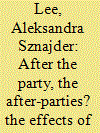

|
|
|
| 3 |
ID:
011339
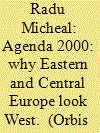

|
|
|
|
|
| Publication |
Winter 1997.
|
| Description |
39-57
|
|
|
|
|
|
|
|
|
|
|
|
|
|
|
|
| 4 |
ID:
128987
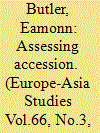

|
|
|
|
|
| Publication |
2014.
|
| Summary/Abstract |
On 1 May 2014, the European Union (EU) celebrated the tenth anniversary of the accession of ten member states-Cyprus, Czech Republic, Estonia, Hungary, Latvia, Lithuania, Malta, Poland, Slovakia and Slovenia. Of these ten new members, eight were Central and East European (CEE) countries that had, for most of the twentieth century, been governed by communist regimes either as republics of the Soviet Union (Latvia, Lithuania and Estonia), satellite states of the Soviet Union (Poland, Hungary, Czech Republic, Slovakia) or as a constituent republic of Yugoslavia (Slovenia). In the subsequent ten years three additional post-communist countries have acceded to the EU (Romania and Bulgaria in 2007 and Croatia in 2013). Commenting on the 2004 EU accession of the first eight former communist countries, the then Irish Prime Minister and President of the European Council, Bertie Ahern, wrote that there was
a particular historical resonance as eight of the former communist countries in the east have emerged from the shadows of the Iron Curtain to join us in working for common goals and for mutual benefit. The artificial divisions, which have blighted our continent's history for so long, are finally being laid to rest.1
|
|
|
|
|
|
|
|
|
|
|
|
|
|
|
|
| 5 |
ID:
130702
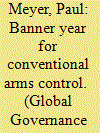

|
|
|
|
|
| Publication |
2014.
|
| Summary/Abstract |
THE CONTROL OF CONVENTIONAL ARMS HAS OFTEN SEEMED THE POOR COUSIN of the global efforts to control weapons of mass destruction (WMD). Since the advent of the atomic era, the focus of arms control and disarmament activity has been overwhelmingly on nuclear weapons and their lesser, if still ugly, stepsisters of biological and chemical weapons. The initial multilateral arms control agreements concerned themselves with limits on the testing of nuclear weapons and, shortly thereafter, with their nonproliferation (e.g., the Nuclear Nonproliferation Treaty of 1968). Bilateral US-Soviet/Russian arms control arrangements also predominantly dealt with the reduction of strategic nuclear forces and restraints on deployments of defenses against (nuclear tipped) ballistic missiles. Efforts to reduce major conventional weapon systems were also taken up in the 1980s in the context of negotiations
between the opposing alliances of NATO and the Warsaw Pact, eventually culminating in the Treaty on Conventional Forces in Europe (CFE Treaty) of 1989. This treaty provided for a massive reduction in the conventional forces that had confronted each other for years in Central Europe and established a new, far more stable security order on the continent. Even the CFE Treaty, however, tended to be overshadowed by other major disarmament agreements concluded in those heady post-Cold War days: the Intermediate Nuclear Forces Treaty (1987), Chemical Weapons Convention (1993), Comprehensive (Nuclear) Test Ban Treaty (1996), and various US-Russian bilateral strategic nuclear arms accords of the 1990s and early 2000s (e.g., the Strategic Arms Reduction Treaty and the Strategic Offensive Reductions Treaty).
|
|
|
|
|
|
|
|
|
|
|
|
|
|
|
|
| 6 |
ID:
147150
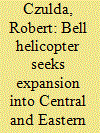

|
|
|
| 7 |
ID:
177876
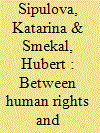

|
|
|
|
|
| Summary/Abstract |
The essay sheds light on the role of constitutional courts in transitional justice, focusing on their role in mitigating the conflicts between transitional justice and international human rights commitments. Through a study of the Czech Constitutional Court’s case law, we demonstrate that international human rights work both as a constraint and a tool. Constitutional courts use international human rights law selectively, when it suits their reasoning and views on transition. Nevertheless, the influence of international human rights law strengthens over time, especially when supported by the adverse rulings of international bodies, and gradually prevails over transitional justice justifications.
|
|
|
|
|
|
|
|
|
|
|
|
|
|
|
|
| 8 |
ID:
141408
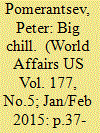

|
|
|
|
|
| Summary/Abstract |
After most Central European states joined the EU and NATO, it seemed that the last page of Cold War history had been turned. But reports of the death of conflict in the region turned out to have been greatly exaggerated. Russia is on the move again, aiming to show the world that NATO has feet of clay, that the EU is a geopolitical weak sister and the transatlantic alliance a myth. The US might be slowly waking up to the challenge of Vladimir Putin’s evermore expansionist Russia, but it still considers the issue a “regional” problem. The Kremlin’s objective is not to send tanks into Tallinn, however, but to compromise the White House.
|
|
|
|
|
|
|
|
|
|
|
|
|
|
|
|
| 9 |
ID:
128993
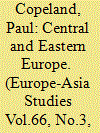

|
|
|
|
|
| Publication |
2014.
|
| Summary/Abstract |
This article analyses the influence and status of the Central and Eastern European states within an enlarged European Union. It analyses two European Union policy negotiations: the Services Directive and the European Union's Financial Crisis Rescue Plan. Central to understanding the influence of a member state within negotiations are its economic size and knowledge of the Brussels policy-making apparatus. Nevertheless, as the new member states from Central and Eastern Europe have gained experience of the European Union policy negotiation process, they remain limited in their ability to influence outcomes. Therefore it can be concluded that while knowledge during negotiations is a necessary condition for successfully influencing outcome, alone it is insufficient because economic weight is particularly pertinent to those outcomes. As a result, the status of the new member states within the European Union is best described as being that of a junior partner, despite the assumed parity of Union membership.
|
|
|
|
|
|
|
|
|
|
|
|
|
|
|
|
| 10 |
ID:
052223
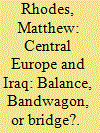

|
|
|
| 11 |
ID:
052222
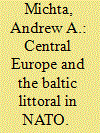

|
|
|
| 12 |
ID:
125218
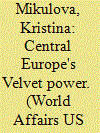

|
|
|
|
|
| Publication |
2013.
|
| Summary/Abstract |
Central Europe used to be a place of tragedy, according to Czech novelist Milan Kundera, a leading dissident voice during the communist era. Throughout its troubled history, the region, fatefully wedged between Germany and Russia, suffered deep wounds to its psyche at the hand of great powers: oppression by enemies, betrayal by friends. Its battered societies were so busy trying to survive, Kundera mused, that they did not have the leisure to look inward and focus on themselves.
|
|
|
|
|
|
|
|
|
|
|
|
|
|
|
|
| 13 |
ID:
008131
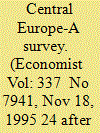

|
|
|
|
|
| Publication |
Nov 18, 1995.
|
| Description |
24 after p72
|
|
|
|
|
|
|
|
|
|
|
|
|
|
|
|
| 14 |
ID:
046261
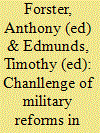

|
|
|
|
|
| Publication |
New York, Palgrave Macmillan, 2002.
|
| Description |
x, 260p.
|
| Standard Number |
0333946219
|
|
|
|
|
|
|
|
|
|
|
|
Copies: C:1/I:0,R:0,Q:0
Circulation
| Accession# | Call# | Current Location | Status | Policy | Location |
| 046294 | 355.30947/FOR 046294 | Main | On Shelf | General | |
|
|
|
|
| 15 |
ID:
128994
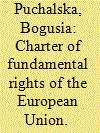

|
|
|
|
|
| Publication |
2014.
|
| Summary/Abstract |
The proclamation of the Charter for Fundamental Rights of the European Union, in December 2000 at Nice, France, followed by its inclusion within the failed Constitutional Treaty and its current status as a legally binding document under the Treaty of Lisbon, charts the changing fortunes of European Union politics dealing with fundamental rights protection. This article outlines the main rationales and hopes behind the enactment of the Charter and notes that through the process of political conditionality it may have been devalued from its very conception. The article suggests that, following their accession, Poland, and later the Czech Republic, used the Charter and Lisbon Treaty negotiations, including their opt-outs from the Charter, to engage in a game of power politics that had both domestic and European undertones. This politics of power game-play reflected a need by both states, and Poland in particular, to respond to both the political conditionality that they had been required to sign up to as part of the accession process and to emphasise how membership had improved their negotiating power. The article suggests that the consequence of this action by both states has not only further devalued the Charter but potentially undermined the rights of Polish and Czech citizens.
|
|
|
|
|
|
|
|
|
|
|
|
|
|
|
|
| 16 |
ID:
160831
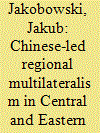

|
|
|
|
|
| Summary/Abstract |
This article examines the network of Chinese-led regional platforms, established throughout the developing world in the twenty-first century. It seeks to identify the common features of Chinese-led regional multilateralism: its normative basis, institutionalization patterns and the scope of cooperation. A comparative study of three selected platforms established in Central and Eastern Europe (16 + 1), Africa (FOCAC), and Latin America (CCF) is provided. These comprehensive dialogue mechanisms are based on Chinese-backed norms of non-binding agreements, voluntarism and consensus, derived from the tradition of South–South cooperation. This translates into a flexible and loose institutional structure that enables China to combine multilateral and bilateral approaches, creating a highly adaptable blueprint for managing foreign relations on a regional scale. The article evaluates the outcomes of the Chinese-led regional model and discusses the implications of the findings for the understanding of China’s evolving foreign policy.
|
|
|
|
|
|
|
|
|
|
|
|
|
|
|
|
| 17 |
ID:
118735
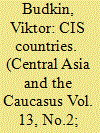

|
|
|
|
|
| Publication |
2012.
|
| Summary/Abstract |
December 1991 marked the beginning of a grandiose experiment whose purpose was to establish a whole group of independent states in the territory of a world giant known as the U.S.S.R., which occupied one-sixth of the Earth. Their establishment was based on the negation of the previous Soviet model providing for the domination of one party, which had imposed a no-choice ideology on the society, and for the administrative command system of politics and economics.
|
|
|
|
|
|
|
|
|
|
|
|
|
|
|
|
| 18 |
ID:
132939
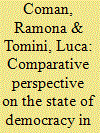

|
|
|
|
|
| Publication |
2014.
|
| Summary/Abstract |
The scholarship on Central and Eastern European politicsand societies is well established in the literature. Over the past two decades, scholars have addressed a variety of topics including the role of civil society in transition and democratic consolidation (Linz & Stepan 1996a, 1996b; P?ibá? & Young 1999; Pridham 2001; Pollack & Wielgohs 2004); the process of institution-building and the functioning of institutions (Karp 1994; Zielonka 2001; Malova & Haughton 2002); the development of political parties and their contribution to democracy (Kitschelt 1992; De Waele 1999; Lewis 2001, 2008; Hough 2005; Deegan-Krause & Haughton 2010; Burnell & Gerrits 2010); the role of external actors in the process of consolidation of democracy, and in particular the role of the EU and the enlargement process (Papadimitriou 2002; Dimitrova 2004; Schimmelfennig & Sedelmeier 2005; Vachudova 2005; Epstein & Sedelmeier 2009; Morlino & Sadurski 2010; O'Brennan 2011); populist parties (Mudde 2007; De Waele & Pacze?niak 2010; Pankowski 2011) and the ambiguous role of nationalism (Latawski 1994; Auer 2004); the problem of the rights of ethnic, linguistic, religious and national minorities (Taras 1998; Rechel 2009); the relationship between justice and politics (Anderson et al.2005; Coman & De Waele 2007; Coman 2009; Piana 2010); the construction of a market economy and the relationship between democracy and economic policies (Jeffries 1996; Stark & Bruszt 1998; Hasselman 2006; Myant & Drahokoupil 2010); political cultures (Pollack 2003; Klingemann 2008); the problems related to corruption (Smilov & Toplak 2007; Schmidt-Pfister & Moroff 2012); and the development of regionalisation and the role of local governments (Hughes et al.2004a, 2004b; Coulson & Campbell 2007).
|
|
|
|
|
|
|
|
|
|
|
|
|
|
|
|
| 19 |
ID:
084506
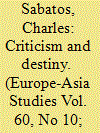

|
|
|
| 20 |
ID:
132630
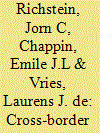

|
|
|
|
|
| Publication |
2014.
|
| Summary/Abstract |
The recent low CO2 prices in the European Union Emission Trading Scheme (EU ETS) have triggered a discussion whether the EU ETS needs to be adjusted. We study the effects of CO2 price floors and a price ceiling on the dynamic investment pathway of two interlinked electricity markets (loosely based on Great Britain, which already has introduced a price floor, and on Central Western Europe). Using an agent-based electricity market simulation with endogenous investment and a CO2 market (including banking), we analyse the cross-border effects of national policies as well as system-wide policy options.
A common, moderate CO2 auction reserve price results in a more continuous decarbonisation pathway. This reduces CO2 price volatility and the occurrence of carbon shortage price periods, as well as the average cost to consumers. A price ceiling can shield consumers from extreme price shocks. These price restrictions do not cause a large risk of an overall emissions overshoot in the long run. A national price floor lowers the cost to consumers in the other zone; the larger the zone with the price floor, the stronger the effect. Price floors that are too high lead to inefficiencies in investment choices and to higher consumer costs.
|
|
|
|
|
|
|
|
|
|
|
|
|
|
|
|
|
|
|
|
|